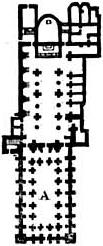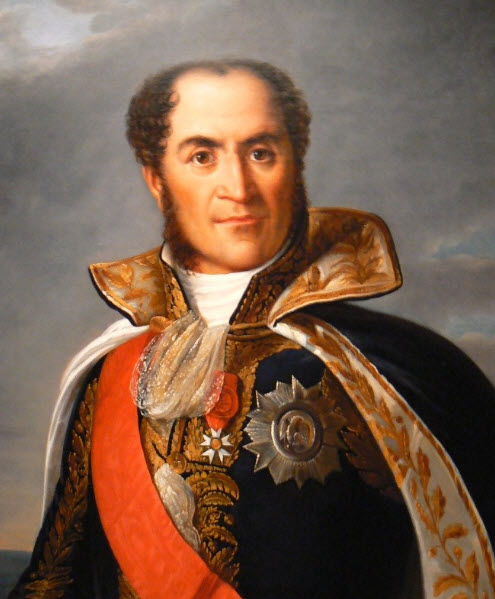|
Chiaravalle Abbey
The Abbey of Santa Maria di Rovegnano (Latin: ''Sanctæ Mariæ Clarævallis Mediolanensis'') is a Cistercian monastic complex in the ''comune'' of Milan, Lombardy, northern Italy. The '' borgo'' that has developed round the abbey was once an independent commune called Chiaravalle Milanese, now included in Milan and referred to as the Chiaravalle district. The abbey was founded on 22 January 1135 as a daughterhouse of Clairvaux; it is one of the first examples of Gothic architecture in Italy, although maintaining some late Romanesque influences. History In October 1134 Cistercian monks from Morimond, near Dijon established themselves at Coronate, near Pieve di Abbiategrasso southwest of Milan, and founded the new Morimondo Abbey, whence the location was given, in 1171, the name of Morimondo. At the start of 1135 another group of Cistercians, coming from Clairvaux Abbey and headed by its first abbot and founder, Bernard of Clairvaux, reached Milan as guests of the Benedictin ... [...More Info...] [...Related Items...] OR: [Wikipedia] [Google] [Baidu] |
Sant'Ambrogio, Milan
The Basilica of Sant'Ambrogio (official name: ''Basilica romana minore collegiata abbaziale prepositurale di Sant'Ambrogio'') is a church in the center of Milan, northern Italy. History One of the most ancient churches in Milan, it was built by St. Ambrose in 379–386, in an area where numerous martyrs of the Roman persecutions had been buried. The first name of the church was in fact ''Basilica Martyrum''. When St. Ambrose arrived in Milan, the local churches were in conflict with each other over the conflict between Arianism and the Nicene Creed as well as numerous local issues. He was firmly in support of the First Council of Nicaea, Nicene side of the conflict and wanted to make northern Italy into a pro-Rome stronghold. He did this through both preaching and construction. He built three or four churches surrounding the city; Basilica Apostolorum (now San Nazaro in Brolo), Basilica Virginum (now Basilica of San Simpliciano, San Simpliciano), and Basilica Martyrum (which w ... [...More Info...] [...Related Items...] OR: [Wikipedia] [Google] [Baidu] |
Cisalpine Republic
The Cisalpine Republic ( it, Repubblica Cisalpina) was a sister republic of France in Northern Italy that existed from 1797 to 1799, with a second version until 1802. Creation After the Battle of Lodi in May 1796, Napoleon Bonaparte organized two states: one to the south of the Po, the Cispadane Republic, and one to the north, the Transpadane Republic. On 19 May 1797, Napoleon transferred the territories of the former Duchy of Modena to Transpadania and, on 12 Messidor (29 June), he decreed the birth of the Cisalpine Republic, creating a Directory for the republic and appointing its ministers. France published the constitution of the new republic on 20 Messidor (7 July), establishing the division of the territory into eleven departments: Adda ( Lodi), Alpi Apuane (Massa), Crostolo ( Reggio), Lario (Como), Montagna (Lecco), Olona (Milan), Panaro (Modena), Po (Cremona), Serio (Bergamo), Ticino (Pavia), and Verbano (Varese). The rest of Cispadania was merged into the Cisalpine Re ... [...More Info...] [...Related Items...] OR: [Wikipedia] [Google] [Baidu] |
Napoleonic Wars
The Napoleonic Wars (1803–1815) were a series of major global conflicts pitting the French Empire and its allies, led by Napoleon I, against a fluctuating array of European states formed into various coalitions. It produced a period of French domination over most of continental Europe. The wars stemmed from the unresolved disputes associated with the French Revolution and the French Revolutionary Wars consisting of the War of the First Coalition (1792–1797) and the War of the Second Coalition (1798–1802). The Napoleonic Wars are often described as five conflicts, each termed after the coalition that fought Napoleon: the Third Coalition (1803–1806), the Fourth (1806–1807), the Fifth (1809), the Sixth (1813–1814), and the Seventh (1815) plus the Peninsular War (1807–1814) and the French invasion of Russia (1812). Napoleon, upon ascending to First Consul of France in 1799, had inherited a republic in chaos; he subsequently created a state with stable financ ... [...More Info...] [...Related Items...] OR: [Wikipedia] [Google] [Baidu] |
Bernardino Luini
Bernardino Luini (c. 1480/82 – June 1532) was a north Italian painter from Leonardo's circle during the High Renaissance. Both Luini and Giovanni Antonio Boltraffio were said to have worked with Leonardo directly; he was described as having taken "as much from Leonardo as his native roots enabled him to comprehend". Consequently, many of his works were attributed to Leonardo. He was known especially for his graceful female figures with elongated eyes, called Luinesque by Vladimir Nabokov. Biography Luini was born as Bernardino de Scapis in Runo, a ''frazione'' of Dumenza, near Lake Maggiore. Details of his life are scant. In 1500 he moved to Milan with his father. According to Lomazzo, he trained under Giovan Stefano Scotto, although for others he was a pupil of Ambrogio Bergognone. In 1504-1507 he was probably in Treviso, as attested by a ''Madonna with Child'' signed ''Bernardinus Mediolanensis faciebat'' which is however of disputed attribution. His first fresco works a ... [...More Info...] [...Related Items...] OR: [Wikipedia] [Google] [Baidu] |
Chapter House
A chapter house or chapterhouse is a building or room that is part of a cathedral, monastery or collegiate church in which meetings are held. When attached to a cathedral, the cathedral chapter meets there. In monasteries, the whole community often met there daily for readings and to hear the abbot or senior monks talk. When attached to a collegiate church, the dean, prebendaries and canons of the college meet there. The rooms may also be used for other meetings of various sorts; in medieval times monarchs on tour in their territory would often take them over for their meetings and audiences. Synods, ecclesiastical courts and similar meetings often took place in chapter houses. Design When part of a monastery, the chapter house is generally located on the eastern wing of the cloister, which is next to the church. Since many cathedrals in England were originally monastic foundations, this is a common arrangement there also. Elsewhere it may be a separate building. The chap ... [...More Info...] [...Related Items...] OR: [Wikipedia] [Google] [Baidu] |
Giovanni Antonio Amadeo
260px, Amadeo, Milan Cathedral 260px, The Colleoni Chapel in Bergamo. Giovanni Antonio Amadeo (c. 1447 – 27 or 28 August 1522) was an Italian Renaissance sculptor of the Early Renaissance, architect, and engineer. Biography Amadeo was born in Pavia. In 1470 he was commissioned by Bartolomeo Colleoni to complete his funerary chapel, the Cappella Colleoni in Bergamo, which had been begun by Guiniforte and Francesco Solari. Amadeo added polychrome decoration and many sculptures in the ancient style including medallions, small columns, busts, reliefs of "Histories from the Old Testament" and "Histories of Hercules". Amadeo also designed the funerary monument to Medea Colleoni, which was intended for the church of Santa Maria della Basella in Urgnano. The condottiero's tomb was realized in collaboration with other artists, with Amadeo providing the reliefs of the lower sarcophagus and of the smaller upper sarcophagus, as well seven statues of the Virtues. Amadeo was also commiss ... [...More Info...] [...Related Items...] OR: [Wikipedia] [Google] [Baidu] |
Bramante
Donato Bramante ( , , ; 1444 – 11 April 1514), born as Donato di Pascuccio d'Antonio and also known as Bramante Lazzari, was an Italian architect and painter. He introduced Renaissance architecture to Milan and the High Renaissance style to Rome, where his plan for St. Peter's Basilica formed the basis of design executed by Michelangelo. His Tempietto (San Pietro in Montorio) marked the beginning of the High Renaissance in Rome (1502) when Pope Julius II appointed him to build a sanctuary over the spot where Peter was martyred. Life Urbino Bramante was born under the name Donato d'Augnolo, Donato di Pascuccio d'Antonio, or Donato Pascuccio d'Antonio in Fermignano near Urbino. Here, in 1467, Luciano Laurana was adding to the Palazzo Ducale an arcaded courtyard and other Renaissance features to Federico da Montefeltro's ducal palace. Bramante's architecture has eclipsed his painting skills: he knew the painters Melozzo da Forlì and Piero della Francesca well, who were ... [...More Info...] [...Related Items...] OR: [Wikipedia] [Google] [Baidu] |
Ludovico Il Moro
Ludovico Maria Sforza (; 27 July 1452 – 27 May 1508), also known as Ludovico il Moro (; "the Moor"). "Arbiter of Italy", according to the expression used by Guicciardini,Opere inedite di Francesco Guicciardini etc, Storia fiorentina, dai tempi di Cosimo de' Medici a quelli del gonfaloniere Soderini, 3, 1859, p. 217 was an nobleman who ruled as from 1494 to 1499. Endowed with rare intellect and very ambitious, he managed, although fourth son, to acquire dominion over ... [...More Info...] [...Related Items...] OR: [Wikipedia] [Google] [Baidu] |
Ascanio Sforza
Ascanio Maria Sforza Visconti (3 March 1455 – 28 May 1505) was an Italian Cardinal of the Catholic Church. Generally known as a skilled diplomat who played a major role in the election of Rodrigo Borgia as Pope Alexander VI, Sforza served as Vice-Chancellor of the Holy Roman Church from 1492 until 1505. Biography Early years A member of the House of Sforza, Ascanio Sforza was born in Cremona, Lombardy. His parents were Francesco Sforza, Duke of Milan, and Bianca Maria Visconti. He was also the brother of two Milanese dukes, Galeazzo Maria Sforza (1466–1476) and Ludovico Sforza (1494–1499), and the uncle of a third, Gian Galeazzo Sforza (1476–1494). Ascanio was a student of Francesco Filelfo, a courtier of Duke Francesco Sforza, who introduced him to government and literature. Other cardinals of the family were Guido Ascanio Sforza di Santa Fiora (1534), Alessandro Sforza (1565), Francesco Sforza (1583) and Federico Sforza (1645). At age of 10 he was named commendato ... [...More Info...] [...Related Items...] OR: [Wikipedia] [Google] [Baidu] |
In Commendam
In canon law, commendam (or ''in commendam'') was a form of transferring an ecclesiastical benefice ''in trust'' to the ''custody'' of a patron. The phrase ''in commendam'' was originally applied to the provisional occupation of an ecclesiastical benefice, which was temporarily without an actual occupant, in contrast to the conferral of a title, '' in titulum'', which was applied to the regular and unconditional occupation of a benefice.Ott, Michael. "In Commendam". ''The Catholic Encyclopedia'' Vol. 7. New York: Robert Appleton Company, 1910. 25 July 2015 The word ''commendam'' is the singular of the |







